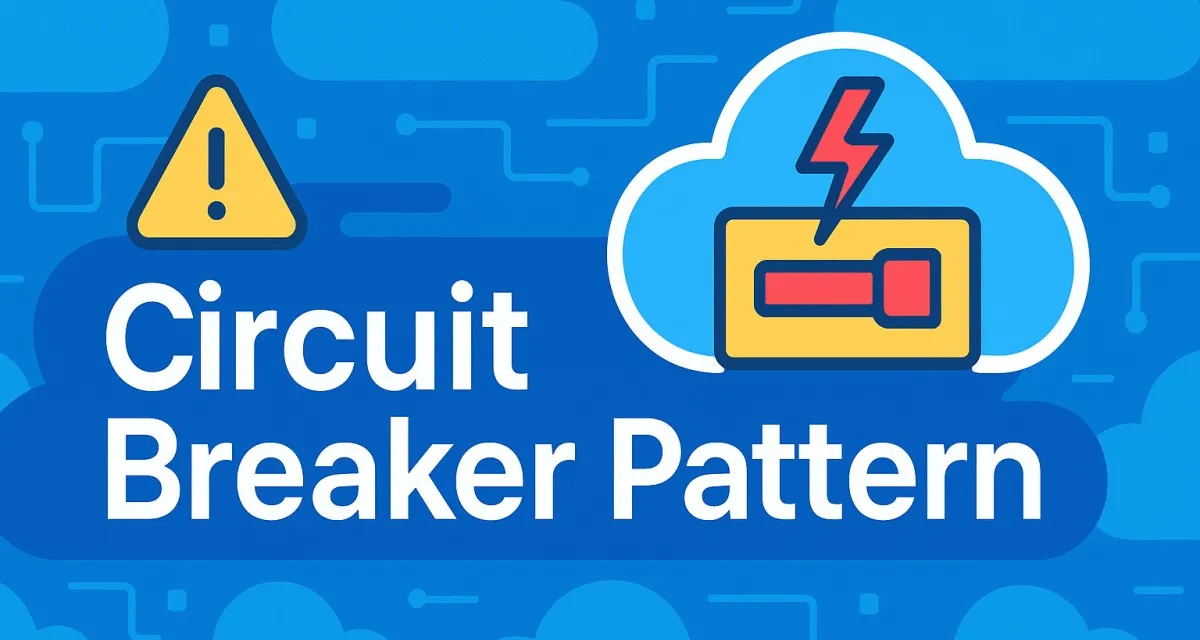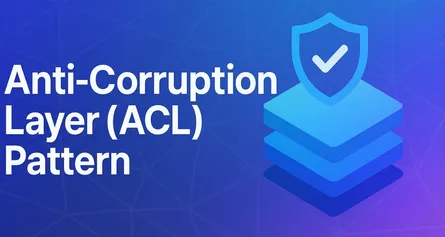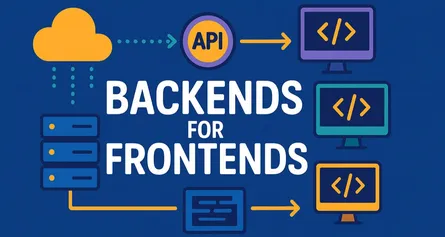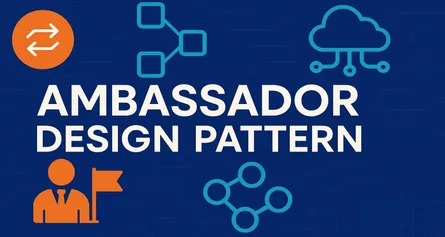
Mastering the Circuit Breaker Pattern for Resilient Cloud Applications
In today’s software landscape, achieving consistent reliability and stability in applications—especially distributed ones—is critical. Imagine a modern application running smoothly, handling thousands of requests per second, when suddenly, a third-party API it depends upon slows down dramatically or starts failing outright. How can your system gracefully manage such failures without cascading into complete downtime? The answer lies in implementing resilient design patterns, among which the Circuit Breaker pattern is indispensable.
In this comprehensive guide, we’ll dive deep into the Circuit Breaker pattern, exploring how it works, when and why to use it, and how you can effectively implement it using the latest C# language features and .NET framework capabilities.
1. Introduction to Resilient Systems and the Circuit Breaker Pattern
1.1 The Imperative of Resilient Cloud Applications
Resilience isn’t merely a buzzword—it’s a necessity in today’s highly distributed cloud applications. Services hosted in cloud environments depend heavily on network calls, external APIs, databases, and microservices. The interconnected nature of these systems introduces many potential points of failure, making resilience essential.
Think of resilience as your application’s immune system. When one part gets sick, it shouldn’t bring down the entire organism. Instead, the system should isolate and handle the issue, recovering gracefully. Resilient applications provide consistent user experiences, reduce downtime, and protect critical infrastructure, ultimately safeguarding your business reputation and revenue streams.
1.2 Understanding the Circuit Breaker Pattern: Definition and Core Concept
The Circuit Breaker pattern is a design pattern used to detect failures and prevent repeated unsuccessful requests to unreliable services. It works similarly to an electrical circuit breaker—automatically tripping to stop further damage during a power surge. When a service consistently fails or responds slowly, the circuit breaker temporarily “opens,” stopping further requests to that service. This mechanism helps maintain overall system stability by preventing resource exhaustion and cascading failures.
Core Benefits:
- Prevents system overload.
- Enables quick recovery and self-healing.
- Provides fallback behavior to maintain partial service availability.
1.3 Historical Context and its Relevance in Distributed Systems
Originally popularized by Michael Nygard in his book Release It! (2007), the Circuit Breaker pattern has become a cornerstone for building resilient systems. With the rise of microservices architectures, it has evolved from an innovative solution to an industry standard. Netflix famously implemented this pattern with their Hystrix library, significantly enhancing their system’s reliability in complex distributed scenarios.
As applications have shifted to distributed, cloud-based architectures, the relevance of the Circuit Breaker pattern has only grown, helping engineers manage complexity by containing failures and improving application resiliency.
1.4 Positioning the Circuit Breaker within Cloud Design Patterns
The Circuit Breaker pattern fits within a larger context of cloud design patterns like Retry, Bulkhead, and Fallback patterns. Each of these patterns addresses different resilience aspects, and the Circuit Breaker is particularly effective at handling persistent faults and preventing failure propagation.
Think of these patterns as specialized tools. The Retry pattern is like giving a second chance, useful for transient failures. The Circuit Breaker, however, kicks in when retries no longer help—like when a service is persistently failing—and ensures the system doesn’t continuously waste resources on hopeless attempts.
2. The Core Principles of the Circuit Breaker
2.1 The States of a Circuit Breaker (Closed, Open, Half-Open)
A Circuit Breaker operates in three states, transitioning dynamically based on the health of the underlying service:
- Closed: Normal operation. Requests flow freely. Failures are monitored.
- Open: After exceeding a failure threshold, the breaker trips. Requests immediately fail without contacting the failing service.
- Half-Open: After a predefined timeout, the breaker allows a limited number of test requests to check if the underlying service has recovered.
These states effectively balance system performance with fault tolerance.
2.2 Failure Thresholds and Trip Conditions
The breaker transitions to the Open state when a predefined failure threshold is reached. This threshold might be defined as:
- A certain number of consecutive failures.
- A percentage of failed requests over a specific time frame.
Here’s a practical analogy: imagine a bridge designed to close after it detects structural stress. Similarly, a Circuit Breaker closes (opens, technically) after detecting excessive failure stress on its underlying service.
2.3 Reset Mechanisms and Recovery Strategies
Reset mechanisms dictate how the Circuit Breaker moves from Open back to Half-Open and eventually to Closed again. A commonly employed strategy is to wait for a fixed timeout, then transition to Half-Open to test the service’s stability. If tests pass, normal operation resumes; otherwise, the breaker returns to Open.
2.4 The Role of Timeouts and Fallbacks
Timeouts prevent system threads from indefinitely waiting for slow or failing external services. Fallbacks provide an alternative execution path or default response when the breaker is open, ensuring graceful degradation of user experience.
For instance, if your user interface depends on product recommendations from a microservice, a fallback might serve cached or generic recommendations instead of failing completely.
3. Key Components of a Circuit Breaker Implementation
3.1 The Circuit Breaker State Machine
The heart of the Circuit Breaker is a finite state machine that manages transitions between states based on predefined conditions.
Consider this simple state representation in C# using modern language features:
public enum CircuitState
{
Closed,
Open,
HalfOpen
}
public class CircuitBreakerStateMachine
{
public CircuitState CurrentState { get; private set; } = CircuitState.Closed;
public void Trip()
{
CurrentState = CircuitState.Open;
OnOpen?.Invoke();
}
public void Reset()
{
CurrentState = CircuitState.HalfOpen;
OnHalfOpen?.Invoke();
}
public void Close()
{
CurrentState = CircuitState.Closed;
OnClose?.Invoke();
}
public event Action? OnOpen;
public event Action? OnHalfOpen;
public event Action? OnClose;
}3.2 Failure Counters and Timers
Tracking failures and managing timers accurately is essential. Modern .NET libraries such as Polly simplify this significantly by abstracting complexity into fluent APIs:
var breaker = Policy
.Handle<Exception>()
.CircuitBreakerAsync(
exceptionsAllowedBeforeBreaking: 3,
durationOfBreak: TimeSpan.FromSeconds(30),
onBreak: (exception, breakDelay) => Console.WriteLine($"Circuit broken due to: {exception.Message}"),
onReset: () => Console.WriteLine("Circuit reset."),
onHalfOpen: () => Console.WriteLine("Circuit half-open; next call is a test."));3.3 Request Execution Logic (Protected Calls)
Executing protected calls involves wrapping external service requests in Circuit Breaker logic, typically with minimal intrusion:
var result = await breaker.ExecuteAsync(async () =>
{
return await externalService.GetDataAsync();
});3.4 Callbacks for State Transitions (OnOpen, OnHalfOpen, OnClose)
Callbacks are vital to monitoring and acting on state transitions. These hooks enable logging, metrics collection, and alerting:
breaker.OnBreak((ex, duration) => Log.Warning($"Circuit opened: {ex.Message}, for {duration}"));
breaker.OnReset(() => Log.Information("Circuit closed and ready for operations."));
breaker.OnHalfOpen(() => Log.Information("Circuit half-open; evaluating service stability."));4. When to Employ the Circuit Breaker Pattern
4.1 Identifying Unstable External Dependencies
Circuit Breakers are ideal for systems relying heavily on external dependencies such as:
- Remote APIs
- Databases
- Microservices
Evaluate dependencies frequently and implement breakers around those with histories of instability.
4.2 Scenarios Involving High Latency or Frequent Failures
If services frequently timeout or respond erratically, introducing a Circuit Breaker can significantly reduce response time and resource consumption by quickly detecting and isolating failures.
4.3 Preventing Cascading Failures in Distributed Architectures
The key benefit of the Circuit Breaker is containing failures. Without it, a single service failure can ripple through dependent services, causing system-wide outages.
4.4 Business Cases Benefiting from Enhanced System Stability
Circuit Breakers are particularly valuable for critical systems such as e-commerce platforms during peak sales periods (e.g., Black Friday). A robust breaker implementation minimizes downtime and maintains customer satisfaction, directly influencing business outcomes.
5. Implementing the Circuit Breaker in C# (.NET) with Modern Approaches
The theory behind the Circuit Breaker pattern is essential, but practical, real-world implementation is where its value truly emerges. The .NET ecosystem provides a flexible environment for implementing Circuit Breakers—from low-level, hand-rolled solutions to robust, battle-tested libraries like Polly. In this section, we’ll walk through both approaches, helping you understand not only how Circuit Breakers work, but how to deploy them effectively in your own systems.
5.1 Fundamental Circuit Breaker Implementation from Scratch (Illustrative Example)
While production environments often benefit from mature libraries, understanding a Circuit Breaker’s inner workings sharpens your architectural thinking and debugging skills. Let’s start with a minimal, hand-crafted implementation. This stripped-down version highlights the core logic without external dependencies.
public enum CircuitBreakerState
{
Closed,
Open,
HalfOpen
}
public class SimpleCircuitBreaker
{
private readonly int _failureThreshold;
private readonly TimeSpan _openToHalfOpenWaitTime;
private int _failureCount;
private DateTime _lastFailureTime;
private CircuitBreakerState _state;
public SimpleCircuitBreaker(int failureThreshold, TimeSpan waitTime)
{
_failureThreshold = failureThreshold;
_openToHalfOpenWaitTime = waitTime;
_state = CircuitBreakerState.Closed;
_failureCount = 0;
}
public TResult Execute<TResult>(Func<TResult> operation)
{
if (_state == CircuitBreakerState.Open)
{
if (DateTime.UtcNow - _lastFailureTime > _openToHalfOpenWaitTime)
{
_state = CircuitBreakerState.HalfOpen;
}
else
{
throw new InvalidOperationException("Circuit is open. Calls are not permitted.");
}
}
try
{
TResult result = operation();
Reset();
return result;
}
catch
{
RegisterFailure();
throw;
}
}
private void RegisterFailure()
{
_failureCount++;
_lastFailureTime = DateTime.UtcNow;
if (_failureCount >= _failureThreshold)
{
_state = CircuitBreakerState.Open;
}
}
private void Reset()
{
_failureCount = 0;
_state = CircuitBreakerState.Closed;
}
}This basic version:
- Monitors failures and tracks state.
- Trips to the Open state after repeated failures.
- Transitions to Half-Open after a cooldown, allowing a test call.
You can expand this with logging, event hooks, or asynchronous support, but this example shows the backbone of the pattern.
5.2 Leveraging Polly: A De-facto Standard for Resilience in .NET
While rolling your own can be instructive, it rarely matches the depth, flexibility, or reliability of a dedicated library. Polly has become the go-to resilience library for .NET, offering a fluent, composable API and mature handling of various failure scenarios.
5.2.1 Basic Circuit Breaker Configuration with Polly
Let’s look at a straightforward example of configuring a Circuit Breaker policy with Polly:
using Polly;
using Polly.CircuitBreaker;
var breakerPolicy = Policy
.Handle<HttpRequestException>()
.CircuitBreaker(
exceptionsAllowedBeforeBreaking: 3,
durationOfBreak: TimeSpan.FromSeconds(20),
onBreak: (exception, timespan) =>
{
Console.WriteLine($"Circuit opened for {timespan.TotalSeconds} seconds due to: {exception.Message}");
},
onReset: () => Console.WriteLine("Circuit closed, normal operation resumed."),
onHalfOpen: () => Console.WriteLine("Circuit is half-open, next call is a trial.")
);A few points to notice:
- The policy tracks exceptions and transitions states automatically.
- Handlers provide insight and hooks for custom logic during state transitions.
- The API is expressive and easy to read, reducing boilerplate.
5.2.2 Advanced Polly Features: Handlers, Fallbacks, and Policy Combinations
Polly doesn’t just stop at basic Circuit Breakers. It excels in letting you combine policies for sophisticated resilience strategies. For example, pairing a Circuit Breaker with retries and fallbacks:
var fallbackPolicy = Policy<string>
.Handle<BrokenCircuitException>()
.FallbackAsync(
fallbackValue: "Service unavailable, using cached data.",
onFallbackAsync: async b =>
{
// Log or notify here
await Task.CompletedTask;
});
var retryPolicy = Policy
.Handle<HttpRequestException>()
.RetryAsync(2);
var circuitBreakerPolicy = Policy
.Handle<HttpRequestException>()
.CircuitBreakerAsync(
exceptionsAllowedBeforeBreaking: 3,
durationOfBreak: TimeSpan.FromSeconds(30));
var combinedPolicy = Policy.WrapAsync(fallbackPolicy, retryPolicy, circuitBreakerPolicy);
string result = await combinedPolicy.ExecuteAsync(async () =>
{
// Your protected logic, e.g., HTTP call
return await externalService.GetDataAsync();
});With these building blocks, you can craft resilience that is precisely tuned to your context.
5.3 Integration with HttpClientFactory in ASP.NET Core
Modern ASP.NET Core encourages the use of HttpClientFactory for efficient and reliable HTTP calls. Polly integrates seamlessly, letting you define resilience policies that are automatically applied to outbound HTTP requests.
Register your policy during service configuration:
services.AddHttpClient<IMyApiClient, MyApiClient>()
.AddPolicyHandler(Policy
.Handle<HttpRequestException>()
.CircuitBreakerAsync(
exceptionsAllowedBeforeBreaking: 5,
durationOfBreak: TimeSpan.FromSeconds(60)));Now, every HTTP call via this typed client is protected by the Circuit Breaker. This approach:
- Ensures consistency across services.
- Simplifies dependency management.
- Encourages the separation of concerns.
You can also chain policies (retry, timeout, fallback) for even greater robustness, all managed in one place.
5.4 Asynchronous Operations and async/await Best Practices with Circuit Breakers
Cloud-native applications rely heavily on asynchronous operations for scalability and responsiveness. Polly’s asynchronous policies fit perfectly with the async/await model in C#.
Some best practices:
- Always use async Circuit Breaker policies for I/O-bound operations to avoid thread starvation.
- Never block on async calls (such as using
.Resultor.Wait()) as this can lead to deadlocks or performance degradation. - Propagate cancellation tokens to support cooperative cancellation and timely release of resources.
Example with cancellation:
public async Task<string> FetchDataAsync(CancellationToken cancellationToken)
{
var policy = Policy
.Handle<HttpRequestException>()
.CircuitBreakerAsync(3, TimeSpan.FromSeconds(30));
return await policy.ExecuteAsync(async ct =>
{
// Pass the token to downstream async methods
return await _httpClient.GetStringAsync("https://api.example.com/data", ct);
}, cancellationToken);
}This approach ensures your Circuit Breaker doesn’t just protect against service failures, but does so in a way that is efficient, modern, and ready for cloud-scale workloads.
6. Advanced Implementation Considerations and Language Features
Moving from a basic implementation to a robust, production-ready Circuit Breaker means thinking deeply about customization, observability, integration, and code maintainability. In real-world scenarios, nuanced requirements often demand you go beyond “out-of-the-box” defaults. Let’s explore what experienced architects should keep in mind.
6.1 Customizing Failure Detection and Thresholds
Not every failure is equal, nor is every service. The effectiveness of a Circuit Breaker often hinges on how you define and detect failures.
Granular Exception Handling: By default, libraries like Polly treat certain exceptions as “failures.” But sometimes, you want more control. For example, a timeout or HTTP 500 might be a clear failure, but a 404 may not warrant opening the circuit.
var breaker = Policy
.Handle<HttpRequestException>(ex => ex.StatusCode == HttpStatusCode.InternalServerError)
.Or<TimeoutRejectedException>()
.CircuitBreakerAsync(3, TimeSpan.FromSeconds(30));Dynamic Thresholds: In volatile environments, a static failure threshold can lead to undesirable oscillations. For mission-critical endpoints, you might want to dynamically adjust thresholds based on load or time of day. This can be accomplished by integrating configuration providers or custom logic, adjusting policies at runtime based on telemetry or business rules.
Custom Failure Predicates: Consider business-level failures—what if an API always returns HTTP 200, but the payload signals a failed operation? Custom predicates let you include those cases in your Circuit Breaker logic.
var breaker = Policy<string>
.HandleResult(result => result.Contains("error_code"))
.CircuitBreakerAsync(5, TimeSpan.FromSeconds(15));6.2 Monitoring and Telemetry for Circuit Breaker States
In a modern cloud environment, visibility is crucial. Without insight into Circuit Breaker behavior, teams risk being blindsided by issues or “mysterious” degraded performance.
Logging State Transitions: Capture and persist transitions between states. This helps trace incidents and understand why certain requests failed.
var breaker = Policy
.Handle<Exception>()
.CircuitBreakerAsync(
3,
TimeSpan.FromSeconds(60),
onBreak: (ex, ts) => _logger.LogWarning("Circuit opened due to: {Error}", ex.Message),
onReset: () => _logger.LogInformation("Circuit closed."),
onHalfOpen: () => _logger.LogInformation("Circuit half-open.")
);Integrating with Telemetry Systems: Push state information and metrics to tools like Application Insights, Prometheus, or OpenTelemetry. This enables dashboards and alerting—so operators can quickly react if circuits stay open too long, or if the number of open circuits spikes.
Health Checks and Probes: Expose Circuit Breaker states via custom health endpoints. This empowers orchestration tools or load balancers to react accordingly, such as draining traffic from unhealthy instances.
public CircuitBreakerState GetCircuitState() => _breaker.CircuitState;You might surface this in an ASP.NET Core health check, making circuit status visible to DevOps.
6.3 Dependency Injection and Configuration of Circuit Breakers
For maintainability and testability, it’s best to configure and inject Circuit Breakers using the built-in Dependency Injection (DI) system in ASP.NET Core and .NET.
Centralized Policy Registration:
Register your policies in Startup.cs or Program.cs, ensuring they’re shared and easily testable.
services.AddSingleton<IAsyncPolicy<HttpResponseMessage>>(serviceProvider =>
Policy<HttpResponseMessage>
.Handle<HttpRequestException>()
.CircuitBreakerAsync(3, TimeSpan.FromSeconds(30)));Typed HttpClient Configuration:
Leverage IHttpClientFactory to automatically apply policies to HTTP calls.
services.AddHttpClient<IMyService, MyService>()
.AddPolicyHandlerFromRegistry("MyCircuitBreakerPolicy");Configuration via Options Pattern: Decouple hardcoded values by using configuration files or environment variables.
public record CircuitBreakerOptions
{
public int ExceptionsAllowedBeforeBreaking { get; init; }
public TimeSpan DurationOfBreak { get; init; }
}
services.Configure<CircuitBreakerOptions>(configuration.GetSection("CircuitBreaker"));This approach makes your resilience strategies flexible and environment-aware, while supporting strong typing and validation.
6.4 Using C# 8/9/10 Features for Cleaner Code
Modern C# brings many features that make resilience infrastructure both more expressive and less error-prone.
Using Declarations: Minimize scope for IDisposable objects—such as custom timers or logging providers used within breaker handlers.
using var activity = telemetryClient.StartActivity("BreakerTransition");Record Types for Configuration:
Represent Circuit Breaker configuration using record types for immutability and pattern matching.
public record CircuitBreakerConfig(
int FailureThreshold,
TimeSpan BreakDuration,
TimeSpan RetryInterval
);This allows clean, safe configuration passing and easy use in DI and options patterns.
Pattern Matching and Switch Expressions: Streamline handling state transitions or customizing responses based on state.
string DescribeBreakerState(CircuitBreakerState state) =>
state switch
{
CircuitBreakerState.Closed => "Normal operation",
CircuitBreakerState.Open => "Circuit open—requests are blocked",
CircuitBreakerState.HalfOpen => "Testing recovery",
_ => "Unknown"
};Async Streams and ValueTask: When gathering telemetry, use async streams for efficiency.
public async IAsyncEnumerable<BreakerEvent> GetBreakerEventsAsync()
{
// Yield events as they occur
yield return new BreakerEvent { ... };
await Task.Delay(1000);
}Nullable Reference Types: Leverage null-safety in state machines and handlers for more robust code.
public Action? OnOpen { get; set; }Expression-bodied Members: Reduce boilerplate and improve readability in utility functions and predicates.
public bool IsTripped => State == CircuitBreakerState.Open;7. Real-World Use Cases and Architectural Scenarios
Understanding the Circuit Breaker pattern is essential, but seeing it in action in practical scenarios brings clarity to how it improves real-world systems. Let’s explore key use cases and architectural scenarios where Circuit Breakers shine brightest.
7.1 Protecting External API Calls in a Microservices Architecture
Microservices often rely heavily on external API interactions, creating multiple potential failure points. A failing external API can quickly cascade, slowing or even halting multiple internal services. By integrating Circuit Breakers around external API calls, systems can avoid unnecessary delays and failures.
Example scenario: A payment microservice connects to an external credit verification API. By wrapping calls in a Circuit Breaker, temporary API disruptions won’t cripple payment processing entirely. Instead, fallback mechanisms like cached verification results can provide continuity.
7.2 Enhancing Database Connection Resilience
Database downtime or connection saturation can have catastrophic consequences. Circuit Breakers help limit the impact of such disruptions by managing access during outages.
Practical implementation: Suppose your reporting service heavily queries a read-replica database. Implementing a Circuit Breaker allows the application to detect frequent timeouts or slow queries, quickly diverting traffic to a standby database or cache layer. This keeps services responsive even when database performance degrades temporarily.
7.3 Safeguarding Third-Party Service Integrations
Third-party services, while valuable, are outside your control and can introduce instability. Circuit Breakers provide essential protection by isolating your system from external instability.
Real-life example: An e-commerce platform integrates a shipping partner’s API to estimate delivery dates. During high-volume events like Black Friday, the external API might degrade. A Circuit Breaker prevents continuous failed requests, instead serving pre-calculated estimates, maintaining a seamless shopping experience for users.
7.4 Applying Circuit Breakers in Event-Driven Systems
Event-driven architectures, such as those built on Kafka, Azure Event Hubs, or RabbitMQ, face unique resilience challenges. Circuit Breakers help manage event processing failures, preventing dead-letter queues from overflowing.
Scenario example: Imagine event consumers processing messages from a queue. If the downstream processing logic repeatedly fails, opening the Circuit Breaker halts message processing temporarily, allowing the system to self-correct, avoiding message loss or endless retries.
8. Common Anti-patterns and Pitfalls to Avoid
Implementing Circuit Breakers without careful thought can lead to unintended consequences. Avoid these common pitfalls to ensure you reap the benefits without inadvertently introducing new problems.
8.1 Over-reliance on Default Configurations
Using default settings without tailoring them to your application’s characteristics can either trigger unnecessary Circuit Breaker openings or fail to catch critical failures. Always customize failure thresholds, timeouts, and policies based on real usage patterns and system-specific data.
8.2 Incorrectly Sized Timeouts and Thresholds
Too short a timeout or low a threshold can falsely trigger the Circuit Breaker, unnecessarily disrupting your services. Conversely, overly generous settings might fail to protect your system when needed. Balance timeouts and thresholds based on thorough analysis and ongoing performance data.
8.3 Lack of Monitoring and Alerting
Deploying Circuit Breakers without sufficient observability is a critical oversight. Without insights into state transitions, failures, and openings, your team risks prolonged downtime or mysterious performance issues. Integrate detailed logging and telemetry from day one.
8.4 Circuit Breaker as a Replacement for Proper Error Handling
A Circuit Breaker isn’t a substitute for comprehensive error handling. Treat it as a complementary tool, not as a primary error-handling strategy. Errors should be caught and handled explicitly, with Circuit Breakers serving to prevent excessive impact.
8.5 Implementing Circuit Breakers for Internal, Stable Dependencies
Adding Circuit Breakers to highly reliable internal services or stable integrations introduces unnecessary complexity. Use this pattern selectively, targeting genuinely unstable or external dependencies rather than blindly applying it everywhere.
9. Advantages and Benefits of the Circuit Breaker Pattern
The Circuit Breaker pattern provides numerous tangible benefits. Understanding these can help communicate value clearly within your organization.
9.1 Improved System Stability and Availability
Circuit Breakers isolate and contain failures, ensuring local faults don’t cascade into widespread outages. Systems remain operational, enhancing reliability and service availability.
9.2 Prevention of Cascading Failures
By halting repeated calls to failing components, Circuit Breakers prevent one service’s instability from affecting others. This critical containment maintains the overall health of your distributed architecture.
9.3 Faster Recovery from Service Outages
With automated recovery checks, Circuit Breakers enable quicker service restoration by testing the availability of failing services without manual intervention. This significantly accelerates system-wide recovery times.
9.4 Enhanced User Experience
Circuit Breakers enable fallback responses, meaning users experience graceful degradation rather than hard failures. Maintaining partial functionality during outages drastically improves overall user satisfaction.
9.5 Reduced Load on Failing Services
When services experience issues, Circuit Breakers reduce load by temporarily halting calls. This break often provides essential breathing room, allowing services to recover faster and reducing downtime duration.
10. Disadvantages and Limitations
Though powerful, Circuit Breakers are not without limitations. Knowing these helps ensure thoughtful and balanced implementation decisions.
10.1 Increased Code Complexity and Overhead
Introducing Circuit Breakers inherently increases system complexity. It requires ongoing attention, monitoring, and fine-tuning. Thus, weigh benefits carefully against increased maintenance demands.
10.2 Potential for False Positives (Opening Too Quickly)
Circuit Breakers that are too sensitive might trigger unnecessarily. This can disrupt otherwise healthy service interactions. Regularly reviewing and adjusting configurations based on actual operational data mitigates this risk.
10.3 Requires Careful Configuration and Monitoring
Circuit Breakers are not “set-and-forget” solutions. They require continual monitoring, logging, and adjustments to remain effective. Neglecting this ongoing maintenance can lead to unexpected operational issues.
10.4 Not a Panacea for All Failure Modes
Circuit Breakers address specific scenarios like repeated failures and high latency but do not solve issues such as data consistency, business logic failures, or poor application design. It’s crucial to combine Circuit Breakers with other resilience strategies.
11. Conclusion and Best Practices for .NET Architects
As we conclude this comprehensive exploration, let’s revisit key insights and best practices to help .NET architects effectively leverage the Circuit Breaker pattern in their systems.
11.1 Key Takeaways for Implementing Resilient Systems
- Always match Circuit Breaker configurations to real-world data.
- Tailor thresholds and policies precisely to your use cases.
- Combine Circuit Breakers with complementary resilience patterns.
11.2 Strategic Placement of Circuit Breakers
Position Circuit Breakers thoughtfully around unstable or critical external dependencies, high-latency scenarios, or frequently unreliable third-party integrations. Avoid overuse to maintain clarity and simplicity in your architecture.
11.3 Emphasizing Testing and Monitoring
Make comprehensive testing and robust monitoring essential parts of your Circuit Breaker implementation strategy. Constant feedback loops help detect issues early and inform necessary adjustments quickly.
11.4 Looking Beyond Circuit Breakers: Complementary Resilience Patterns
The Circuit Breaker is one piece in a broader resilience toolkit. Complementary patterns like Retry, Bulkhead, and Fallback enhance your resilience posture further:
- Retry Pattern: Handles transient failures, giving requests additional attempts.
- Bulkhead Pattern: Prevents resource exhaustion by isolating failures.
- Fallback Pattern: Provides alternative responses, ensuring graceful degradation.
Integrating these patterns holistically ensures your architecture is prepared for various failure scenarios and enhances the overall robustness of your system.
Share this article
Help others discover this content
About Sudhir mangla
Content creator and writer passionate about sharing knowledge and insights.
View all articles by Sudhir mangla →




